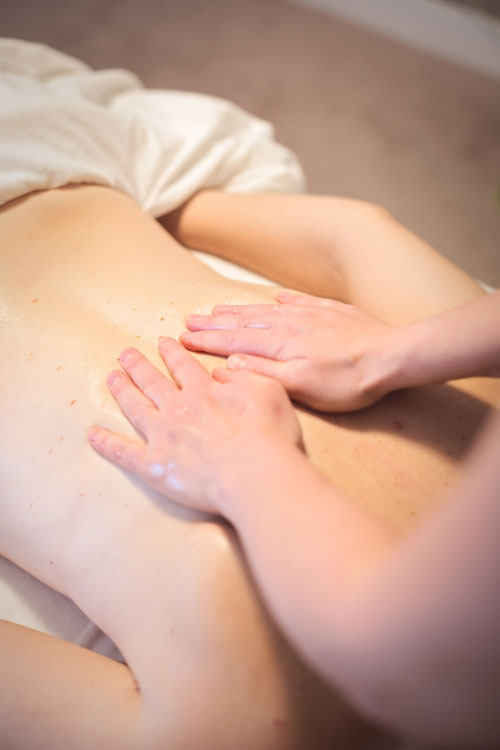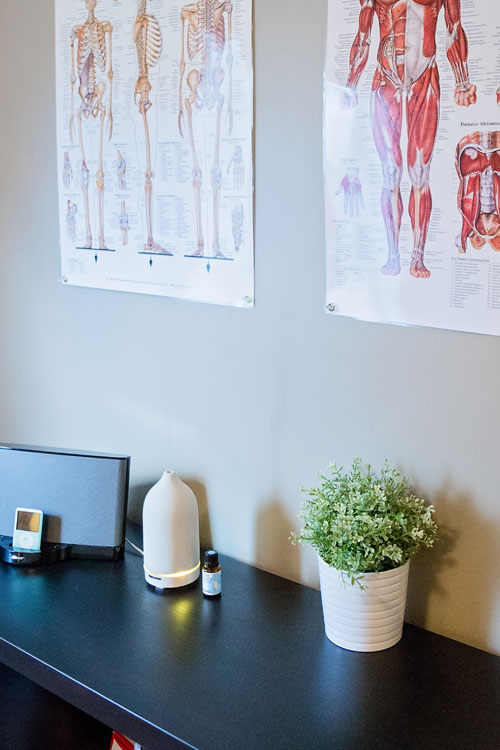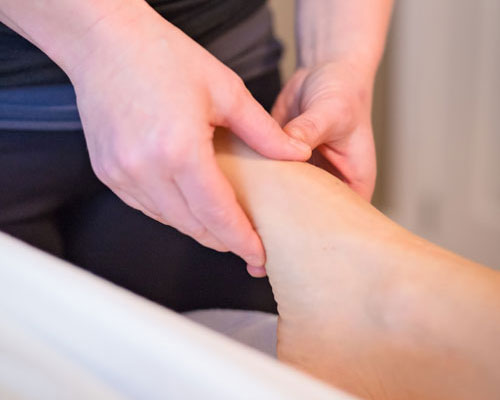
Massage Therapy Services and Techniques
Swedish Massage
One of the most common techniques used in massage therapy both therapeutic and relaxation based. Swedish massage was developed in the early 1800’s in Sweden. It involves the therapist applying smooth gliding strokes with squeezing, rolling, kneading, frictioning, or stripping of the soft tissue and muscles. Swedish massage can also include the gentle movement of joints. The focus is to relax tissue, increase circulation, as well as break down adhesions and scar tissue and increase range of motion in joints. Swedish massage therapy can be both relaxing and energizing and is applied using oil.
Relaxation Massage
Usually in the context of a full body treatment including Swedish massage therapy techniques in a slow and rhythmic application. The focus is to decrease sympathetic nervous system firing, which is more commonly known as the “fight or flight” response, this encourages the parasympathetic nervous system which promotes relaxation. In a relaxed state people may experience improved mental clarity, improved digestion, better sleep, and an increased sense of well-being.


Neuromuscular therapy
NMT is a medically oriented style of massage therapy focused on treating conditions such as chronic pain. It involves both the nervous and muscular systems of the body. Techniques may include muscle stripping, myofascial release and trigger point therapy. Techniques may be applied with or without the use of oil. Results may include increased circulation, decreased nerve compression, improved posture and a decrease in biomechanical problems caused by repetitive movement injuries.
Trigger Point Therapy
Is the treatment of trigger points or myofascial trigger points using techniques such as compression, muscle stripping and friction. The Therapist always works within the patient’s level of comfort for tenderness and flushes the tissue following specific treatment using circulatory techniques and gentle stretching.
Myofascial trigger Point
A hyperirritable spot that is usually within a taut band of skeletal muscle or in the muscles fascia. With compression, the spot is painful and can give rise to characteristic referred pain, tenderness, or other symptoms. If a trigger point is active it will always be tender, usually refer pain when touched, can prevent full lengthening of that muscle, and may contribute to a local twitch response. A trigger point can also be latent where although it’s contributing to pain or dysfunction is only tender when compressed.
Myofascial Release
Myofascia is the connective tissue of a muscle. It surrounds individual muscle fibers and muscle groups, and forms tendons that attach to bones. Fascia runs continuously throughout the body lying deep to the skin and surrounding most structures including blood vessels and organs. Myofascial restriction then can have a very profound effect on the body. It may become restricted from overuse, inactivity, muscle tension, inflammation, trauma, or disease. Release in this tissue can decrease pain, relax muscle tension, improve posture, and improve blood and lymph flow. Myofascial release is typically applied at the beginning of a massage therapy session and is applied without the use of oil.


Pre and Postnatal Massage Therapy
With Pregnancy comes many special considerations and applications for Massage Therapy. Massage therapy can be useful during this time in promoting relaxation, improving sleep, and relieving tension in muscles and joints experienced by a changing body. Massage Therapy can also be beneficial for improving an overall sense of well being as well as increasing confidence during the labor process. Position for a massage during pregnancy may require special pillowing or being supported comfortably in a side-lying position. Let the Therapist know what you prefer. Manual Lymph drainage may be helpful for reducing swelling experienced during this time most commonly in hands or feet. Post-natal massage is also very beneficial in supporting woman post pardom. For women who have undergone C-section surgery manual lymph drainage can be useful in minimizing scar tissue formation and rerouting lymph that can sometimes get trapped in a “pouch” like formation under the scar. For more details please ask your massage therapist.
Manual Lymph Drainage
Manual Lymph drainage is a gentle and safe technique that encourages the flow of Lymph fluid in the body. The technique is applied by the therapist with a two directional stretch to the skin ending in a zero phase or complete release of the tissue in a circular motion. This encourages the flow of lymph and the movement of lymph fluid in a desired direction. The technique is also applied in a specific pattern toward deeper drainage sites. Manual lymph drainage is applied in a rhythmic and repetitive motion to aid in the relaxation of the lymph vessels and movement of lymph. Deeper techniques may also be applied to address deeper vessels in muscles and joints.
Read more..

